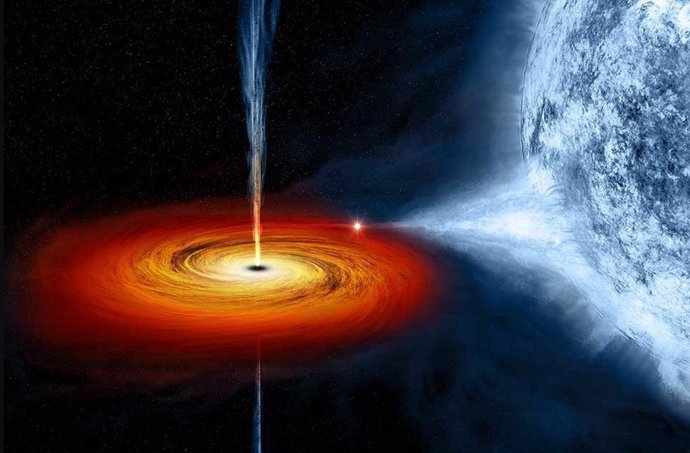Stellar mass black hole – OXFORD UNIVERSITY
May 17. () –
Astrophysicists have obtained the first observational proof that a ‘immersion region’ around black holes not only exists, but exerts one of the greatest gravitational forces.
The new findings, that demonstrate a key prediction of Einstein’s theory of gravity, has been published in Monthly Notices of the Royal Astronomical Society by an international team led by researchers from the Oxford Department of Physics.
The study focuses on small black holes relatively close to Earth, using X-ray data collected by NASA’s NuSTAR and NICER space telescopes.
Unlike Newton’s theory of gravity, Einstein’s theory states that close enough to a black hole it is impossible for particles to follow circular orbits safely, but rather they rush rapidly towards the black hole at a speed close to the of light, which gives its name to the immersion region. The Oxford study focused for the first time on this region in depth, using X-ray data to better understand the force generated by black holes.
“This is the first look at how plasma, broken off from the outer edge of a star, undergoes its final fall towards the center of a black hole, a process that takes place in a system about 10,000 light years away,” he said. it’s a statement Dr Andrew Mummery, from the Department of Physics, who led the study. “What’s really interesting is that there are many black holes in the galaxy and we now have a powerful new technique to use them to study the strongest known gravitational fields.
LIKE A WATERFALL
“Einstein’s theory predicted that this final fall would exist, but this is the first time we’ve been able to show that it happens. Think of it as a river turning into a waterfall; until now, we’ve been looking at the river. This is our first view of the waterfall. We believe that this represents an interesting new advance in the study of black holes, which will allow us to investigate this last area around them. Only then will we be able to fully understand the gravitational force this final fall of plasma occurs in. the very edge of a black hole and shows that matter responds to gravity in its strongest possible form.”
Astrophysicists have been trying to understand what happens near the surface of the black hole for some time, and they do so by studying the disks of material that orbit around it. There is a final region of space-time, known as the immersion region, where it is impossible to stop a final descent into the black hole and the surrounding fluid is effectively doomed.
For many decades, astrophysicists have debated whether the so-called immersion region would be detectable. The Oxford team has spent the last few years developing models for this and, in the study just published, demonstrates its first confirmed detection found using X-ray telescopes and data from the international space station.
While this study focuses on small black holes closer to Earth, a second study team from Oxford’s Department of Physics is part of a European initiative to build a new telescope, the Africa Millimeter Telescope, which would greatly improve our ability to take direct images of black holes. More than €10 million of funding has already been secured, some of which will go towards several first doctorates in astrophysics at the University of Namibia, in close collaboration with the Oxford Department of Physics. The new telescope is expected to make it possible to observe and film large black holes in the center of our own galaxy for the first time, as well as much beyond.







![[Img #74664]](https://thelatestnews.world/wp-content/uploads/2024/12/James-Watson-The-controversial-genius-behind-the-double-helix-150x150.jpg)






![[Img #74664]](https://thelatestnews.world/wp-content/uploads/2024/12/James-Watson-The-controversial-genius-behind-the-double-helix-300x200.jpg)

Add Comment